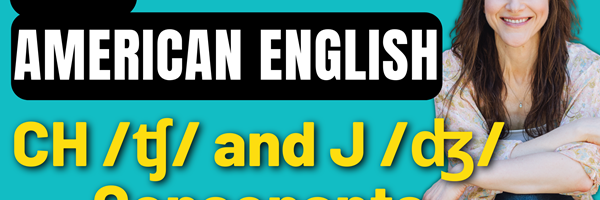(Video Transcript)
Shoe
Wash
Treasure
Beige
Let’s learn how to pronounce the SH and ZH consonants in American English.
How to pronounce the SH /ʃ/ and ZH /ʒ/ consonants
The SH and ZH consonants are very similar.
They share the same lip, tongue, and jaw placements, which means they are made in the same place in the mouth. Watch as I say the two sounds, and you’ll notice that my mouth is in the same position for both sounds.
SH, ZH, SH, ZH
They also share the same type of air release or manner. The air release is noisy, turbulent, and constant.
SH, ZH
But where they differ is voicing. The SH consonant is a voiceless consonant, which means it is made with just air passing through the vocal cords and out of the mouth. The vocal cords are turned off as you say this sound.
SH
The ZH consonant is a voiced consonant. This means the vocal cords are turned on as you say this sound, and you should feel a vibration in the throat when you say it.
ZH
To pronounce the SH and ZH consonants, the jaw closes but the teeth don’t touch. The lips come forward and flare away from the teeth. The tongue is in a wide shape, and the sides of the tongue push against the inside of the upper molars. The tongue tip points down. This allows the air to flow along the center of the tongue and exit the mouth.
SH, ZH
Watch an animation of the SH and ZH consonant sounds. This animation was created from actual videos of a real person pronouncing the SH and ZH sounds. The animation shows the side view of the person's face, and I slowed it down to half speed. First you’ll see the SH consonant sound. Watch how the blade of the tongue comes up and the lips flare away from the teeth.
Now the ZH consonant. Notice the same tongue and mouth placement, but you’ll hear voicing or vocal cord vibration.
When making the ZH consonant, you should feel vibration in two places: in the throat and in the space between the upper and lower front teeth. This is the vibration of the air as it is exiting the mouth.
The SH consonant does not have vibration because it is a voiceless sound, so the vocal cords are turned off as you say it.
Let’s take a closer look at the SH and ZH consonants.
The SH /ʃ/ and ZH /ʒ/ consonants: Up close and in slow motion
Here is the SH sound in isolation. Notice how the jaw closes slightly but the teeth don’t touch. The lips come forward and flare away from the teeth. The tongue is wide and high in the mouth, and the sides push against the inside of the upper molars. The tongue tip is down.
Now the word shake. Again, you’ll see the jaw close, the lips come forward and flare away from the teeth, and the tongue tip points down.
Now the word beige. You can’t see the vibration, but since this word has the voiced ZH consonant, the vocal cords are vibrating as I say it, and there is a secondary vibration in the space where the air exits the mouth, between the upper and lower front teeth.
SH /ʃ/ and ZH /ʒ/ consonant practice
Let’s practice a few words together. Say the words with me. We’ll start with the SH consonant.
Shine, SH, shine
Cushion, SH, cushion
Push, SH, push
Now the ZH consonant. Feel the vibration of the vocal cords in your throat and in the space where the air exits the mouth.
Measure, ZH, measure
Treasure, ZH, treasure
Garage, ZH, garage
Thanks so much for practicing the SH and ZH consonants with me. I hope this video was helpful! But we don’t have to end the practice here - let’s keep working together! Check out the additional practice videos of the SH and ZH consonant sounds in English Pro, my comprehensive online accent training community. The details on how to enroll in English Pro are in the description below. Thanks, and have a great day!
And I'd love to hear from you - contact me to learn how we can work together to perfect your American English pronunciation!



